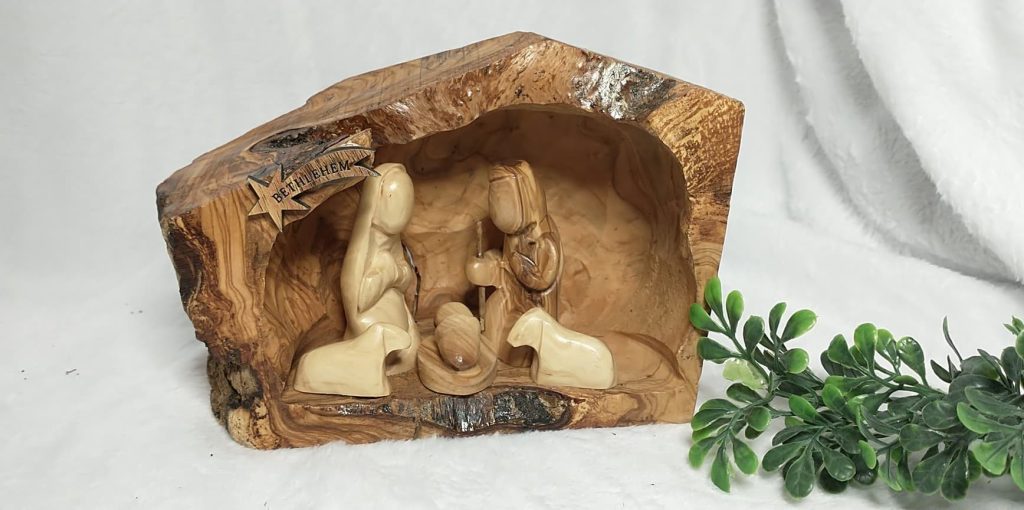Authentic Olive Wood Carvings from Jerusalem Art Museum

Introduction
Nestled in the heart of Jerusalem, the Jerusalem Art Museum stands as a beacon of culture, artistry, and tradition. Among its most captivating treasures are the Olive wood carvings, timeless works of art that reflect the soul of the Holy Land. These pieces are more than simple artifacts; they carry centuries of history, spiritual symbolism, and artistic mastery, making them cherished by visitors and collectors worldwide.
From biblical stories to intricate handmade sculptures, olive wood carvings embody a unique blend of spirituality, craftsmanship, and cultural legacy. This article explores the significance of these carvings, their historical roots, and why the Jerusalem Art Museum remains a vital destination for those seeking authenticity and artistic inspiration.
The Legacy of Olive Wood in Jerusalem
Historical Roots of Olive Wood Carvings
The olive tree is deeply intertwined with the history of the Holy Land. Mentioned countless times in scripture, the olive tree symbolizes peace, endurance, and divine blessing. For centuries, artisans in Jerusalem and Bethlehem have carved this sacred wood into religious figures, crosses, rosaries, and decorative items.
Olive wood carvings first gained global attention during the Middle Ages, when pilgrims visiting the Holy Land sought meaningful souvenirs to take home. These hand-carved objects became not only spiritual tokens but also works of art that showcased the exceptional skills of local craftsmen.
Spiritual and Cultural Symbolism
Beyond their aesthetic beauty, olive wood carvings embody profound symbolism. The olive tree, known for its resilience, represents faith and eternal life. Every carving, whether a nativity scene, a crucifix, or a simple decorative motif, carries with it a spiritual resonance that connects the owner to Jerusalem’s sacred heritage.
Craftsmanship Behind Olive Wood Carvings
The Art of Hand-Carving
One of the most remarkable aspects of olive wood carvings is the painstaking craftsmanship involved in their creation. Unlike mass-produced souvenirs, authentic carvings are hand-sculpted by skilled artisans who pass down their techniques through generations.
The process begins with sourcing wood from pruned olive trees — ensuring that no trees are destroyed. Each piece of wood is carefully dried to prevent cracking, then shaped and polished by hand. The natural grain of olive wood provides unique patterns, ensuring that no two carvings are ever identical.
Tools and Techniques
Artisans use traditional hand tools such as chisels, knives, and sanders to shape intricate details. Many rely on inherited techniques, blending precision with creativity. The result is an object that reflects both personal artistry and cultural heritage.
Modern Innovations
While rooted in tradition, olive wood carving has evolved to embrace contemporary styles. At the Jerusalem Art Museum, visitors can see how modern artists reinterpret classic themes, blending religious motifs with abstract or decorative designs. This fusion ensures that the art form remains alive and relevant in today’s global artistic landscape.
Olive Wood Carvings at the Jerusalem Art Museum
A Curated Collection of Authentic Works
The Jerusalem Art Museum showcases an extraordinary collection of olive wood carvings, carefully curated to represent both historical traditions and modern innovation. Visitors encounter a wide range of pieces, from small devotional items like rosaries and crosses to elaborate nativity sets and statues that capture the imagination.
Educational Exhibits
Beyond their aesthetic appeal, the museum’s exhibits provide an educational journey into the history and craftsmanship of olive wood. Informative displays highlight the origins of the art, the role of olive trees in biblical history, and the evolution of carving techniques over centuries.
Supporting Local Artisans
The museum also plays a vital role in supporting local artisans by providing a platform for their work. Many of the olive wood carvings available in the museum’s gift shop are created by families who have been practicing the craft for generations. Purchasing these items not only provides visitors with a meaningful keepsake but also sustains the livelihood of Jerusalem’s artisan community.
Why Olive Wood Carvings Are Treasured Worldwide
Uniqueness and Authenticity
One of the main reasons olive wood carvings are so highly valued is their authenticity. Each piece is hand-carved, making it truly unique. The rich golden-brown hues and intricate grain patterns of olive wood ensure that no two carvings are ever alike.
Spiritual Connection
For many, owning an olive wood carving is more than collecting art; it is about maintaining a spiritual connection to the Holy Land. Whether displayed at home, used in prayer, or given as a gift, these carvings embody faith and cultural heritage in a tangible form.
Long-Lasting Durability
Olive wood is renowned for its density and durability. Properly cared for, olive wood carvings can last for generations, becoming family heirlooms that carry both personal and cultural stories.
Caring for Olive Wood Carvings
Simple Maintenance Tips
Olive wood carvings require minimal care to preserve their beauty. To maintain their natural sheen, owners can gently polish the wood with a soft cloth and occasionally apply a small amount of olive oil. Avoiding direct sunlight and excessive moisture helps prevent cracks or discoloration.
Preserving Their Legacy
By caring for these carvings, owners not only preserve their physical beauty but also ensure that the stories, traditions, and symbolism they carry remain vibrant for future generations.
Visiting the Jerusalem Art Museum
An Immersive Experience
A visit to the Jerusalem Art Museum is more than just a tour; it is an immersive experience that connects visitors with the living traditions of the Holy Land. Walking through the galleries, guests witness the enduring artistry of olive wood carvings alongside other treasures of religious and cultural significance.
Gift Shop and Collectibles
The museum’s gift shop offers visitors the chance to take home authentic olive wood carvings. Each purchase supports local artisans and provides a meaningful way to remember one’s journey to Jerusalem. Whether choosing a small keepsake or a larger masterpiece, visitors bring home a piece of history and spirituality.
Conclusion
Olive wood carvings represent one of Jerusalem’s most treasured artistic traditions, blending craftsmanship, spirituality, and cultural legacy. At the Jerusalem Art Museum, these works are celebrated not only for their beauty but also for their deep connection to the history and spirit of the Holy Land.
For art enthusiasts, pilgrims, and collectors alike, exploring these carvings offers an opportunity to engage with an ancient craft that continues to inspire today. Each piece tells a story — of faith, resilience, and artistry — making olive wood carvings far more than decorative objects.
If you are seeking authenticity, history, and timeless artistry, there is no better place than the Jerusalem Art Museum to discover the beauty and significance of olive wood carvings. Plan your visit, explore the collection, and take home a piece of Jerusalem’s enduring heritage.




